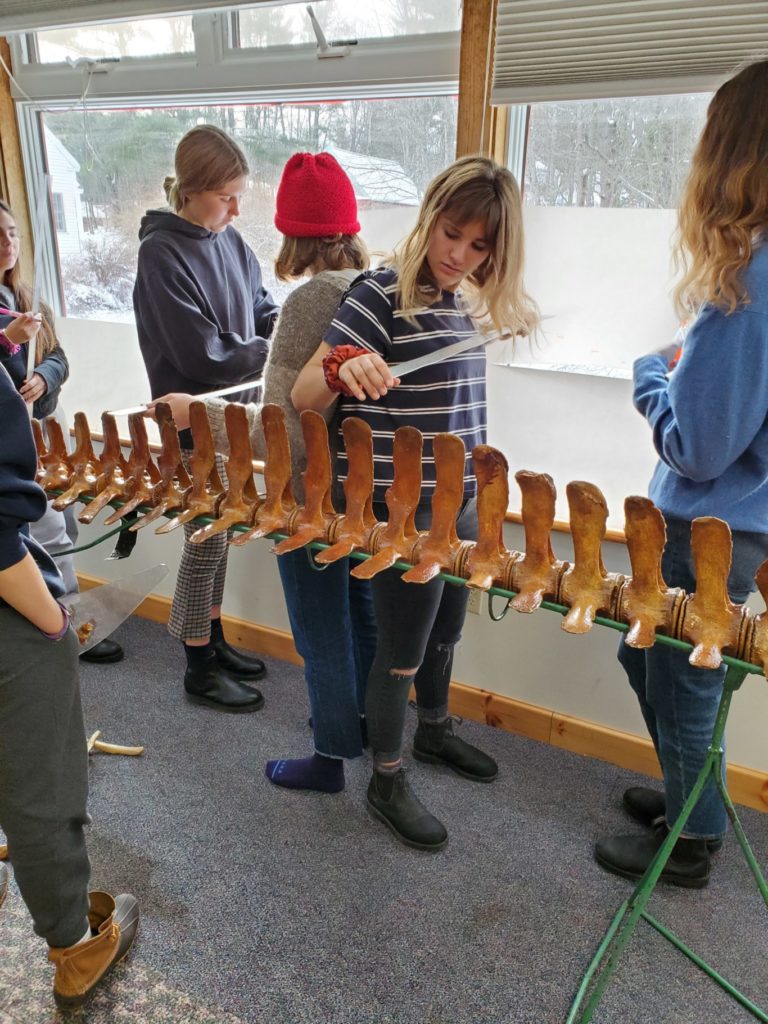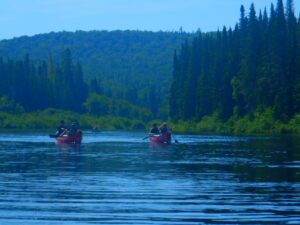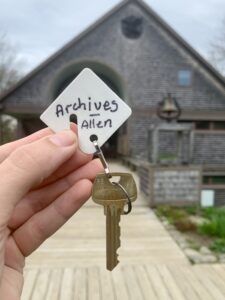Maine Coast Semester math teachers Katie Curtis and Liz Burroughs had their precalculus students doing something fishy last week: calculating an equation to describe the curve of a pilot whale’s spine and then plotting points of the curve on a swath of graph paper. One student, Dylan Stachtiaris, went farther, using graphing software called Desmos to create the perfect outline of the whale’s entire body.

Curtis and Burroughs, who co-teach the course, enjoy helping their students see how math manifests in the world around them. “The students really get engaged,” says Curtis, who tried the assignment for the first time last year. It’s a hands-on project that teaches students about whales as well as precalculus.
The 16-foot pilot whale skeleton was on loan from the Traveling Natural History Program and came with educator Jessica Woodend, who uses it in her educational presentations at schools, libraries, and other community venues. Woodend guided the Maine Coast Semester 63 students in assembling the spine of the pilot whale. She also provided “a brief history of that specific whale and shared some facts about the species, and whales in general, as we went,” says Woodend. “After the spine was put together and on the frame, I showed them the skull, some of the ribs, and the flipper bones of the whale. Then they did the graphing.”

Woodend added. “It was fun to watch them problem-solve…The students seemed really interested in what they were doing and asked a lot of great whale questions.”











